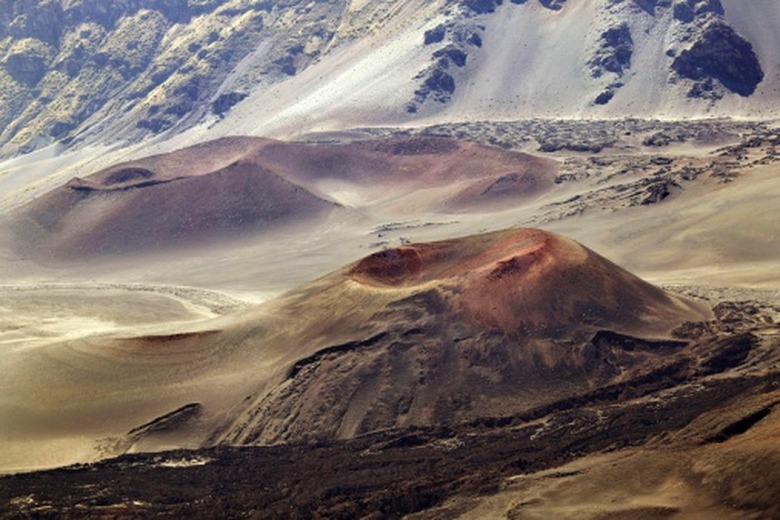Cinder Cone Lava Flow Effects
Cinder cones are one of the three primary types of volcanoes. On the volcanic spectrum, they fall between the fluid lava flows of shield volcanoes and the explosive eruptions of composite volcanoes, though they are much more similar to shield volcanoes. Their greatest threat lies in the lava flows they produce, which can destroy large areas of land and, in rarer instances, cause loss of life.
Cinder Cone Structure
Cinder Cone Structure
Cinder cone volcanoes are the simplest of all volcano types. They are characterized by a conical shape, with steep sides. They rarely reach heights over 1000 ft. They typically have a single, large, central vent at the summit. They are composed almost exclusively of fragmented pyroclastic material, called tephra. This tephra is chunky, producing the cinder appearance from which they get their name.
Lava Eruption Effects
Lava Eruption Effects
Cinder cone volcanoes feature highly fluid basaltic lava. However, this lava is thicker toward the top of the magma chamber, causing gasses to become trapped. This produces small explosive outbursts of short durations, known as strombolian eruptions. These lava fountains, driven by expanding gas bubbles, typically shoot 100 to 1500 ft. in the air. The lava breaks up and cools before landing, producing a pile of tephra around the vent. While not considered very dangerous, the falling lava bombs from these eruptions can injure or kill anyone who gets too close.
Lava Flow Effects
Lava Flow Effects
The primary danger from cinder cone volcanoes is lava flows. Once the bulk of the gasses have been released, the eruptions begin to produce large flows of runny lava. These flows typically emerge from either fissures at the base of the volcano or breaches of the crater wall. This is because the loose tephra structure can seldom support the pressure of magma rising to the summit crater and, instead, tends to leak like a sieve. Cinder cones can be very asymmetrical, because prevailing winds blow the falling tephra to one side of the cone. This topography can funnel the lava flows in the opposite direction.
Example of Cinder Cone Lava Effects
Example of Cinder Cone Lava Effects
In 1943, the Paricutin cinder cone volcano in Mexico sprang forth from a fissure in a farmer's field. Its strombolian eruptions produced a cinder cone, eventually reaching a height of 1200 ft. As the gas pressure subsided, the nature of the eruptions transitioned to lava flows. Over the nine years of eruptions, lava flows covered 10 square miles and ash fall covered 115 square miles, destroying the town of San Juan and killing a large number of livestock.
Cinder Cone Life Cycle
Cinder Cone Life Cycle
The Paricutin eruptions are typical of the cinder cone life cycle. The sequence typically begins with strombolian eruptions, which form the iconic cinder cone structure. This is followed by a transition to lava flows, covering large swaths of land. Cinder cone volcanoes typically have a limited supply of magma, producing a relatively short lifespan. Once the supply of magma has finished oozing out of the vents, cinder cones typically remain dormant and are slowly erased by natural weathering processes.
References
- "U.S. Geological Survey"; Principal Types of Volcanoes
- "USGS Volcano Hazards Program"; Cinder Cone
- Oregon State University: Cinder Cones
- "San Diego State University Department of Geological Sciences"; How Volcanoes Work: Strombolian Eruptions
- "Smithsonian Institution Global Volcanism Program"; Michoacan-Guanajuato
Cite This Article
MLA
Bennett, Doug. "Cinder Cone Lava Flow Effects" sciencing.com, https://www.sciencing.com/cinder-cone-lava-flow-effects-8566108/. 24 April 2017.
APA
Bennett, Doug. (2017, April 24). Cinder Cone Lava Flow Effects. sciencing.com. Retrieved from https://www.sciencing.com/cinder-cone-lava-flow-effects-8566108/
Chicago
Bennett, Doug. Cinder Cone Lava Flow Effects last modified March 24, 2022. https://www.sciencing.com/cinder-cone-lava-flow-effects-8566108/
